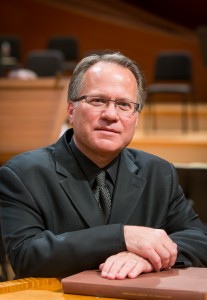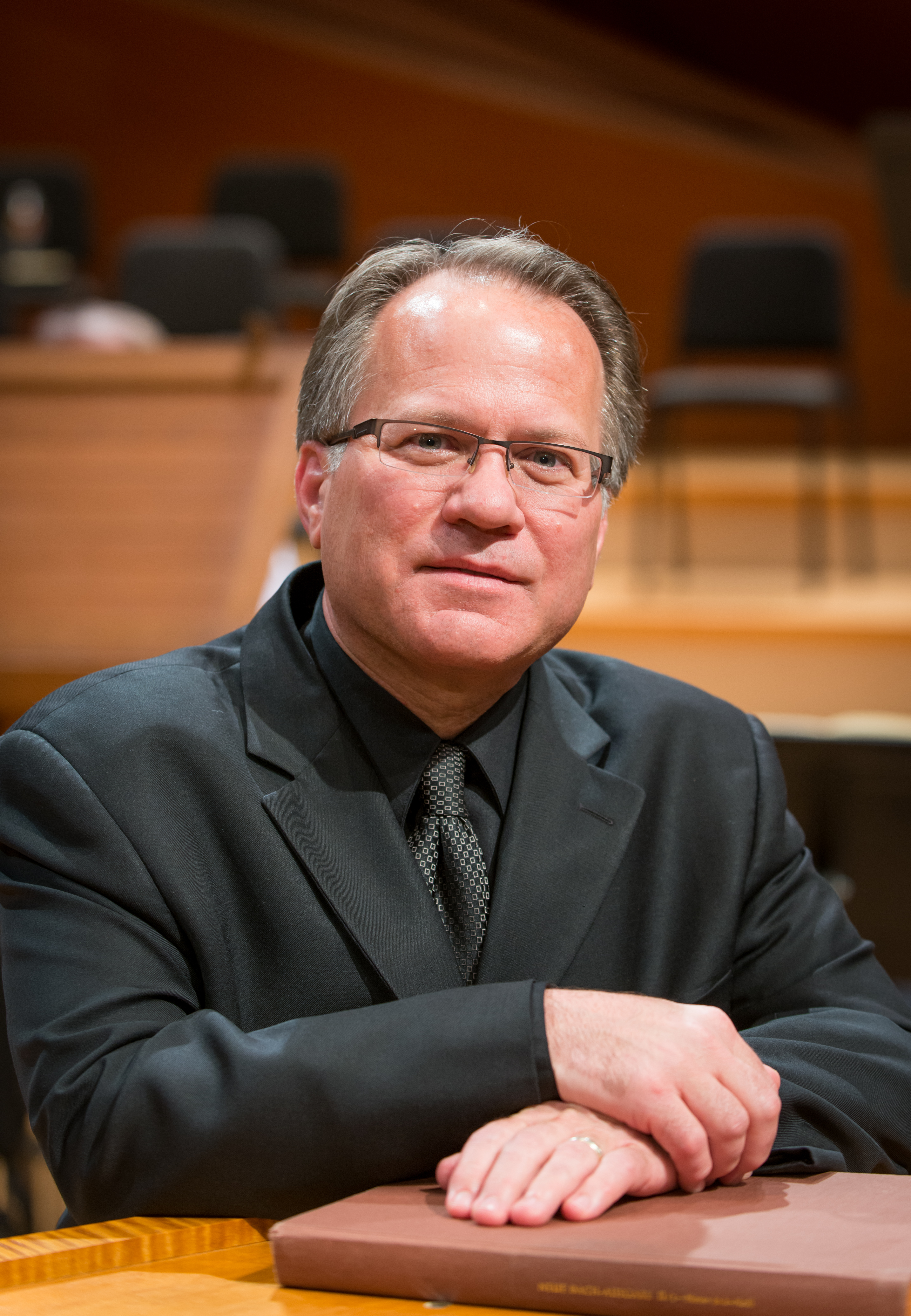A Passionate Passiontide: Three Powerful Hymns in Bach’s St. John Passion – Mark Ball
 Bach’s two surviving settings of the passion narrative (1685-1750) are filled with musical-spiritual treasures and both add richly to the Passiontide contemplation of people of faith. Of Bach’s two monumental works, St. John and St. Matthew, I find the St. John to be the most moving and meaningful. Bach employs more human-scale forces in the St. John. He gives the most emotionally charged moments to the “congregation” in the chorales, or hymns, which punctuate the drama. These stop the flow of the story so that the listener (the one who sings the chorale) can experience its meaning in very personal terms. Bach, the great teacher, is asking of those hearing the passion story, “what does this mean for you?” He calls us to become part of the story, rather than passively observe it from a distance. Here are three examples to illustrate this:
Bach’s two surviving settings of the passion narrative (1685-1750) are filled with musical-spiritual treasures and both add richly to the Passiontide contemplation of people of faith. Of Bach’s two monumental works, St. John and St. Matthew, I find the St. John to be the most moving and meaningful. Bach employs more human-scale forces in the St. John. He gives the most emotionally charged moments to the “congregation” in the chorales, or hymns, which punctuate the drama. These stop the flow of the story so that the listener (the one who sings the chorale) can experience its meaning in very personal terms. Bach, the great teacher, is asking of those hearing the passion story, “what does this mean for you?” He calls us to become part of the story, rather than passively observe it from a distance. Here are three examples to illustrate this:
- Jesus has been bound and sent away to Caiphas. Peter, warming himself by the fire is accused of being a follower of Jesus. He curses, and denies this accusation three times, hears the crowing of the cock, recalls the words of Jesus, and weeps bitterly. Bach concludes this part of the story with this simple, single stanza hymn, asking Jesus, as he did for Peter, to look at us and awaken our fearful hearts.
https://www.youtube.com/watch?v=kGUavIC85BE
Peter, while his conscience slept, thrice denied his Savior;
When it woke he bitter wept at his base behavior,
Jesus, turn your eyes to me, should I, too, forsake thee.
From all falseness set me free. Touch my heart and wake me.
- Jesus, now on the cross, sees his mother and his disciple, John, standing near. He says to his mother, “Woman, behold, your son!” and to John, “Behold, your mother!” Again Bach interrupts the story in order to ask the listener to do as Jesus did — to pay attention to the needs of others, even in the midst of our own pain or suffering.
https://www.youtube.com/watch?v=Vx7kfx1Auh8
All things fashioned he with care in his hour of parting.
Son to mother gives he there, her to him for guarding.
O man, set your life aright, love your God and neighbor.
Death no more is filled with fright, sweet your rest from labor.
- The moving final two minutes of the St. John Passion is a hymn with two stanzas, set to a beautiful chorale melody in the warmly embracing key of E- flat major. Here the passion story has ended and Joseph of Arimathea has laid Jesus in the tomb. Bach’s final request of the listener is to remember that, like Jesus, the destination of our bodies is in the earth. The prayer asks that angels come at the hour of our death to accompany our souls to Abraham’s bosom. Now that the body (the listener’s body) has been laid to rest and the soul escorted by angels to Heaven, the second stanza moves to Bach’s fervent belief in the resurrection. Here he employs vivid, dramatic imagery borrowed from the Lazarus resurrection story – “unbind him” – “unbind my eyes that I may see Jesus.” Then two powerful, emphatic phrases call upon Jesus to “hear me,” – in German “erhöre mich, erhöre mich.” (I’m curious about the theological implications of the human soul “demanding” to be heard, and at what point in the development of reformed theology was this even possible? – Reformed Theology historians, please weigh in here!) The final word, then, is praise: “Thee will I praise eternally.”
https://www.youtube.com/watch?v=wSOTYg86AVs
Ah Lord, your dear sweet angels send;
in my last hour my soul attend,
to Abraham’s bosom bear it.
This body in its narrow room
so softly rests from pain and gloom,
and waits the day prepared it.
Ah, then from death awaken me,
unbind my eyes that I may see
in boundless joy your holy face,
my Savior and my throne of grace!
Lord Jesus Christ, O hear Thou me,
O hear Thou me!
Thee will I praise eternally.
Final thoughts and suggestions:
I have offered poetic translations of the German hymns. These hymns, designed to be sung, are not exact word-for-word translations of the original poems. Bach believed in the importance of singing to nurture Christian faith. He intended and expected that those who heard this music would recognize or even sing along with the hymns. Bach, like Luther, also believed in the value of people singing their faith story in the vernacular – thus my willingness to compromise textual accuracy for a “singing” English language translation.
The links to Youtube recordings above sometimes contain commercial notices; my apologies. These are lovely performances, once you get past the advertisements. In my opinion, the most beautiful performance of Bach’s St John Passion available on Youtube is that of Bach Collegium Japan, conducted by Masaaki Suzuki. As you watch and listen to this performance a literal – not poetic – translation appears at the bottom of the screen. I highly recommend finding one hour and 55 minutes to devote to this, or better yet, find a live performance in your community during this holy season. Bach still speaks and calls us to a thoughtful, faithful consideration of the meaning of Jesus’ passion. He invites us into the story so that the living and dying of Jesus can shape our living, and bring comfort in our dying. Soli Dei Gloria – To God Alone Be Glory.
A link to the Suzuki performance:
https://www.youtube.com/watch?v=-d9FLEIQfME
Mark Ball is engaged in a multi-faceted musical career that includes teaching, singing, conducting, accompanying, and church music. He is in his thirteenth year serving as director of music at Village Presbyterian Church in Prairie Village, Kansas (Kansas City), leading a program of choral and instrumental music involving hundreds of children, youth, and adults. Mr. Ball holds degrees in music education and conducting from William Jewell College in Liberty, Missouri, and The Eastman School of Music of the University of Rochester.

